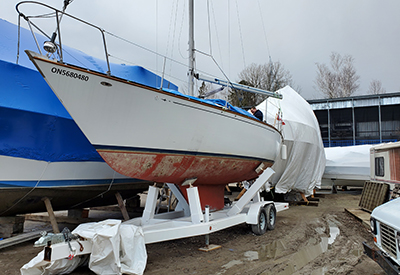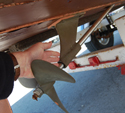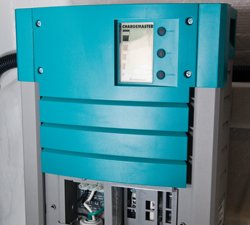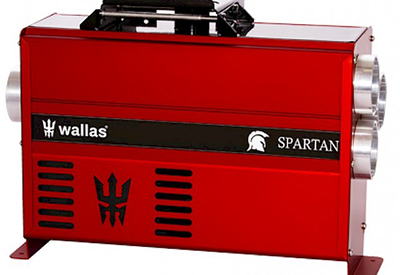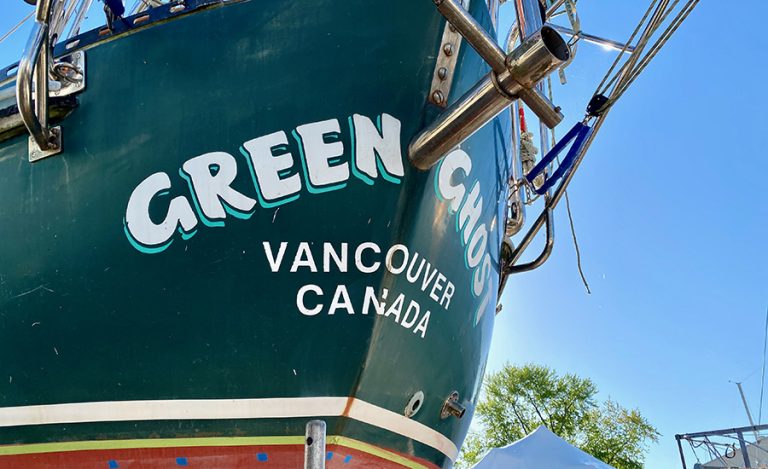User Benefits Of Navigation Electronics At The Helm On A 43’ Cruising Sailboat

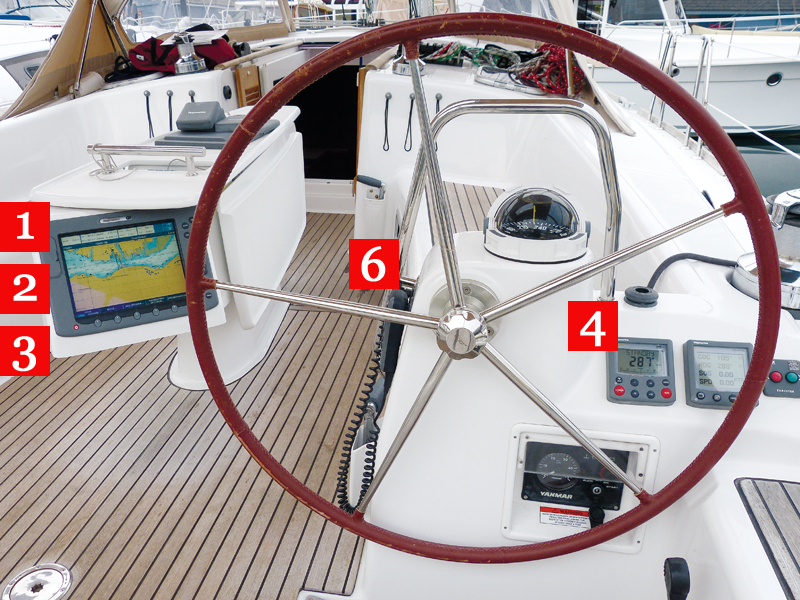
What The Latest Electronics Can Do For You!
While sailboats are usually steered from the cockpit alone and core instruments and displays are needed there, often a lower navigation station has the primary equipment.
Today’s mid-sized sailing cruiser requires much the same in electronics as a powerboat of similar size and range, with the exception of sailing-specific instruments. One key difference is that while most powerboats duplicate their electronics array at two steering stations, sailboats are usually steered from the cockpit alone and core instruments and displays are located there. They may or may not be duplicated at the nav station below.
North Vancouver’s First Yacht Services is a certified Raymarine and Simrad installer and specializes in electronics upgrades. Brad Marchant of FYS walked us through key components of an electronics package for a sailing cruiser around 40’, and some considerations in assembling your chosen package, whether you’re outfitting a new boat or refitting an older one.
#1. Multi-Function Display
BENEFIT: Quick, accurate information.
Essential to the modern cruiser in Marchant’s view, the multi-function display (MFD) serves as the core of the networked system. “A chartplotter is no longer a luxury item―it’s a safety item. It’s a quick, accurate reference to location and navigation data. To get that on a paper chart can take more time and attention, perhaps when you can least afford it.” Stand-alone plotters are really things of the past, giving way to multi-function displays that deliver bright, clear visuals of data from just about any other component, from radar and AIS to engine instrumentation, while cleaning up “gadget clutter” at the helm or nav station. Dual displays are typical on this size of sailboat: the primary display in the cockpit, visible from single or dual steering stations, and a secondary display at the nav station, where it is useful for passage planning and programming. Larger sailboats with ever-wider cockpits may need a display at each of two wheel stations.
#2. AIS
BENEFIT: Situational Awareness
Increasingly popular, says Marchant, and another useful safety feature. If an AIS transmitter-receiver is installed and the vessel has an MMSI code, it can broadcast its identity and location to other vessels or observers ashore. Because it’s not limited to line of sight and provides clear identity, course and speed data from approaching vessels, AIS can also function as a valuable complement to radar in avoiding collisions in poor or restricted visibility.
# 3. Radar
BENEFIT: See In The Dark Or The Fog.
Another essential for the serious cruiser, especially in areas prone to fog, such as coastal waters. Today’s digital radar represents a dramatic advance in usability and readability; among other advantages, it can display approaching targets in a different colour from rain or sea clutter, making identification easier. Typically, radar is displayed on the boat’s MFD, alongside chart displays or even overlaid on top of them.
#4. Autopilot
BENEFIT: Effortlessly Steer An Accurate Course
Perhaps not essential, but an important asset to single or couple crews who may need an extra hand aboard from time to time. “The autopilot is that extra hand,” says Marchant. Interfaced with other components of an electronics network, a ‘pilot can steer to a heading, a wind angle or a waypoint, as well as auto-tack while the crew trims up. A ‘pilot also makes light work of tedious steering on long passages under power. There is a wide choice of reliable ‘pilots on the market these days, but Marchant cautions owners to make sure their new ‘pilot is properly spec’d for the size and displacement of their boat. “An underpowered ‘pilot, such as a wheel ‘pilot, may steer a larger boat just fine under power in calm water, but it won’t cut it under sail or in rougher water, and it may fail sooner than it would if it was sized properly.” In a typical 40-footer a hydraulic ‘pilot with a cockpit control head/display is the way to go, he says. Wired or wireless remote autopilot controllers allow the crew to steer from anywhere on the boat, including tucked under the dodger out of the elements.
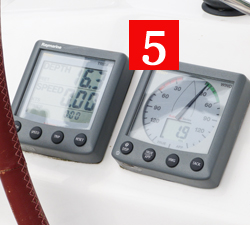 #5. Sailing Instruments
#5. Sailing Instruments
BENEFIT: Conveniently Display Sailing Information On The MFD
The traditional sailing array―wind speed/direction/sailing angle, boat speed and depth―still have a place as stand-alone instruments on most boats, although their outputs can also be displayed on an MFD. Separate displays are usually larger and easier to read from a distance in a busy cockpit, and mean more MFD real estate can be devoted to charting or radar. Today’s instruments can display a wide variety of data, often in owner-customizable ways. For example, if you just loved your old-school analog instruments, you may be able to set up your new instruments to read round! And even if they don’t race actively, Marchant suggests that performance-oriented sailors could benefit from racing-style mast-mounted displays: they’re easy for the helmsman to read without taking his eyes off telltales or steering, and they share key performance data with the rest of the crew, wherever they are on deck.
#6. VHF
BENEFIT: Emergency and Social Communications
Even the humble VHF is part of the network on a modern cruising boat. VHF and AIS can share the same single masthead antenna, with an electronic splitter delivering their signals to the appropriate instrument. And GPS data is supplied to the radio to support Digital Selective Calling capability. Anytime you buy a radio these days, it will probably come with a feature called DSC (Digital Selective Calling). DSC works when you tie your GPS (Chartplotter) into the radio. This is accomplished by using the NMEA 0183 wiring methods. When sending a distress signal, the DSC device will include the ship’s MMSI, Maritime Mobile Service Identity number and your coordinates (Latitude and Longitude). An MMSI number will include information such as your vessel name, size, color, weight and even emergency contact info. You can acquire an MMSI number from Transport Canada.
On sailboats, the main VHF radio is typically installed at the nav station below and operated from a remote mike in the cockpit.
Marchant offers a final piece of advice for purchasers of new sailboats: having your desired electronics installed by the factory before delivery can save you money. Most manufacturers maintain relationships with key electronics suppliers and their purchasing power keeps component prices down. “There’s a lot of value with most boats at the manufacturer level―getting these components installed there at purchase is going to save you money.” Plan your package carefully before you buy, including key items such as plotters, displays and radar, and make it all part of the boat purchase.
By Duart Snow, with Brad Marchant, First Yacht Services

